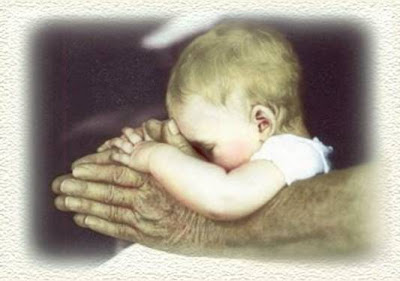
As Jesus went on from there, two blind men followed him, calling out, "Have mercy on us, Son of David!" When he had gone indoors, the blind men came to him, and he asked them, "Do you believe that I am able to do this?" "Yes, Lord," they replied. Then he touched their eyes and said, "According to your faith will it be done to you"; - Matthew 9:27-29
I believe...in What? We have in the scripture today two blind men following after Jesus asking him to have mercy on them, they are in need. They followed Jesus, but we do not see him responding initially. They follow him indoors and come to Him. Jesus ask them do they believe that I am able to do this. Jesus' response is, according to your faith will it be done to you. Jesus touches their eyes and they receive their sight.
What is interesting to me reading this scripture is the question Jesus ask. "Do you believe...". Today, we believe in many things. We believe in our own abilities and skills, until we find out that we are not able to overcome everything alone and in our own ability. We believe in our children or our relationships, until we are disappointed by their choices or decisions. Many believed Obama would be the "savior" for all that is wrong in our country. Yet, now the polls say he is losing the confidence of the people.
Jesus asked a very important question for all of humanity. Do you believe? But more than do you believe, his question was do you believe in me? Do you believe I can do what you are seeking from me? Do we believe that God is able to help us in those areas where we have been trusting others or other things? Obama can never be the savior for all that is wrong in this world or our country. He is simply a man trying to do what he thinks is best. Will he make all the right decisions? He's human, do I need to say more?
But there is one that is more than human, he is also Divine and he is the Son of God. Jesus is asking us in this time are you coming to seek from him and do you really believe he can do what needs to be done? Do you believe God can heal your blindness: blindness to his ways, blindness to spiritual things and blindness to your own purpose and worth in Christ?
Let us say as the blind men said, Yes Lord! And then watch God work. Experience the healing touch upon your blindness and receive your sight! I pray for us today, Lord we seek you just as the blind men did. We seek you to open our eyes to your ability, your will and your way. Open our eyes to see your calling on our lives. Lord help us to shout, LORD I BELIEVE. Lord today we affirm that we believe in you. We believe you are the Son of the most high God. We believe you are the true and only way to the Father and no man will see God unless he believe and trust in you. So today, Lord help us even in our unbelief so that we can draw closer to you and your power. Now Lord we all say this personally: Lord today, I believe in you. I trust you through every battle and every victory, I trust you through every joy and every disappointment, I trust you in my weakness and regardless of my strengths. This day, my heart says I believe and now I recieve my sight. I now receive from you my healing in the area where I need healing. This is my prayer, Amen.






